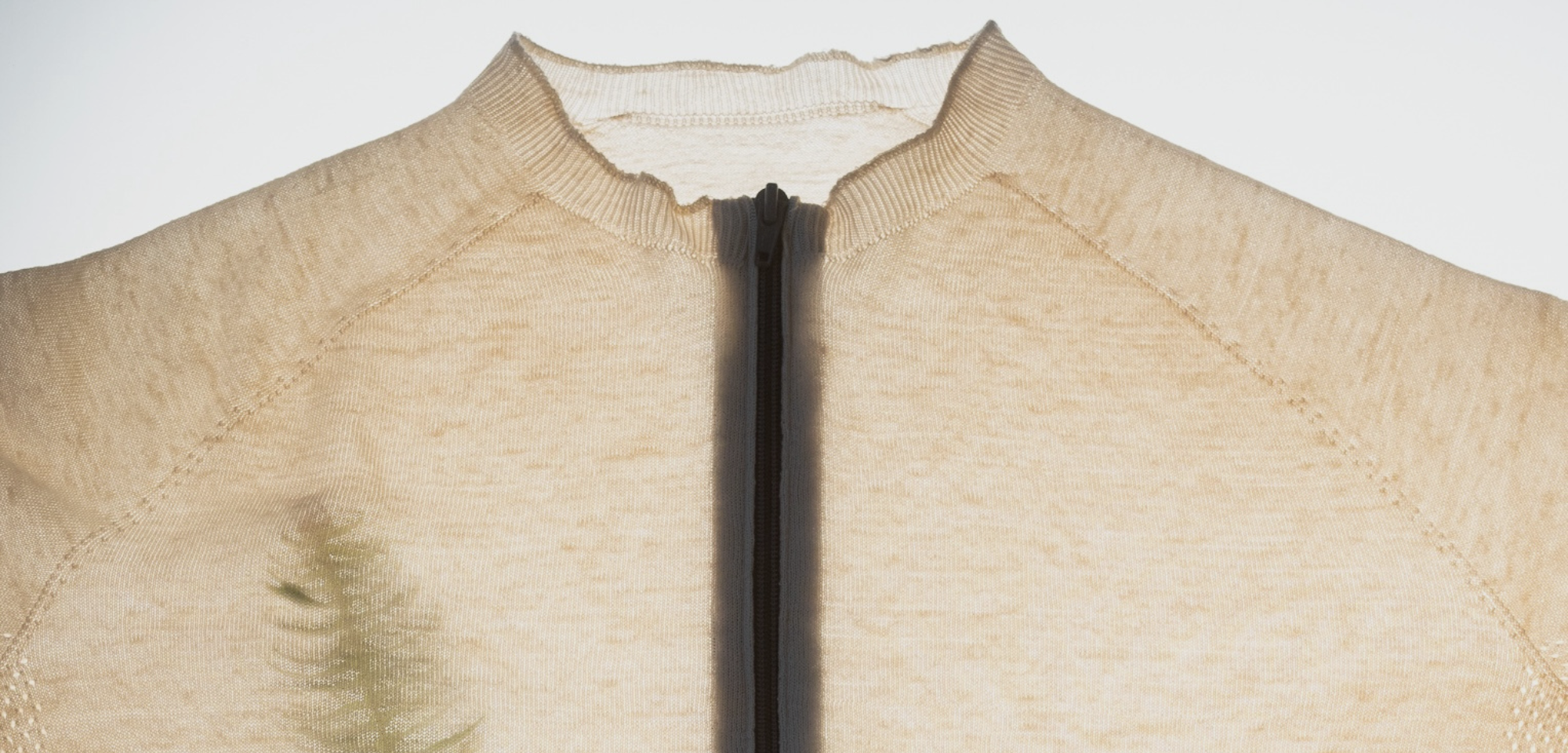Our solution is cycora®: a high-performing and fully circular material, regenerated from the molecules of end-of-life textiles that would have otherwise become ‘waste’.
cycora® is circular—meaning that it mimics the circular life and death cycle of natural ecosystems, repurposing all parts to birth new life. Thanks to the nature of our molecular regeneration, cycora® has the same quality and performance of new yarns—and at the end of its life, it’s able to be continuously regenerated, again and again. Like a tree turns back to soil, and soil back to seed.
Synthetic textiles are produced so widely because they offer some very desirable qualities: they’re strong, and they last. But durability and longevity are inherently at odds with a short lifespan; in the landfill, those attributes add up to vast quantities of material that take eons to degrade, and that incurred a high carbon cost that will compound for much longer. Things that are built to last should get to last.
Unlike natural fibers, the durability of synthetic molecules allows them to be recycled without any degradation in quality. A molecule of polyester is strong. It remains strong whether the garment is new, protecting its wearer on a mountaintop, or in a landfill. In the strength of synthetics, we see an opportunity. Through science, we’ve unlocked the ability for the fashion industry—and our global community—to make and wear synthetics responsibly, in continuous circulation.
The desire to recycle synthetics isn’t new; but historically, it’s been difficult—and in need of a scientific breakthrough to recycle at a meaningful scale. Effective recycling comes down to separation. Clothing is made up of complex combinations of materials: Fabric blends, buttons, zippers, dyes, and finishes. A technology capable of optimally separating those components hadn’t yet existed—until our scientists invented it.
Here’s how we make (and re-make) cycora®:
Step 1: Divert from landfill. We collect post-consumer and post-industrial textiles from facilities where they’re collected or stored for landfill or incineration. We started by collecting from Downtown LA, and today we collect globally. If you can think of a place that houses discarded clothing or textiles, we’ve probably collected from there.
Step 2: Preprocess for regeneration. The diverted fabric has to to be prepared for regeneration—starting with removal of non-fibrous materials like buttons and zippers, and ending with shredding every last piece of fabric.
Step 3 (the magic step): Molecular regeneration. First, our technology purifies the material down to the molecule—removing additives, dyes, and finishes. Then it separates the polyester molecules from mixed fibers, like cotton or nylon.
Step 4: Make molecules into pellets. Most clothing today is made out of small pellets, which are traditionally made from extracting oil. From the molecules of regenerated polyester, we make pellets that hold the exact same molecular structure as new ones—but with old textiles instead of oil.
Step 5: Turn pellets into yarns and fabric. Our pellets are then extruded and strung into strong, durable yarns—which can then be turned into cycora® fabric: Made to last, and tested to perform at the same quality as new, virgin material.
Step 6: Repeat. After a cycora® garment has been given a long life by its wearer, when it finally reaches its end, the garment can restart this same process and become new all over again. Since there’s no degradation in quality, those very same molecules can follow this circular loop, continuously.
From the fashion industry, we have inherited a colossal amount of material—we believe that the solution to fashion ‘waste’ is to view this material as an invaluable resource that can reduce the need to extract from our Earth. The materials we need to clothe generations to come are already above ground—not below it.
But cycora® is more than the fabric of the future. It’s an invitation to everyone who makes and wears clothes to consider where our clothing comes from, how it wears, and where it goes at the end of its life. Clothing, at its most basic purpose, protects us from the elements—and at its highest, expresses the stories of our identities, of our hopes and dreams. And clothing doesn’t have to harm our Earth. As a global community, we can create a more beautiful world—one where we live in material harmony with our Earth and the clothing we wear.







